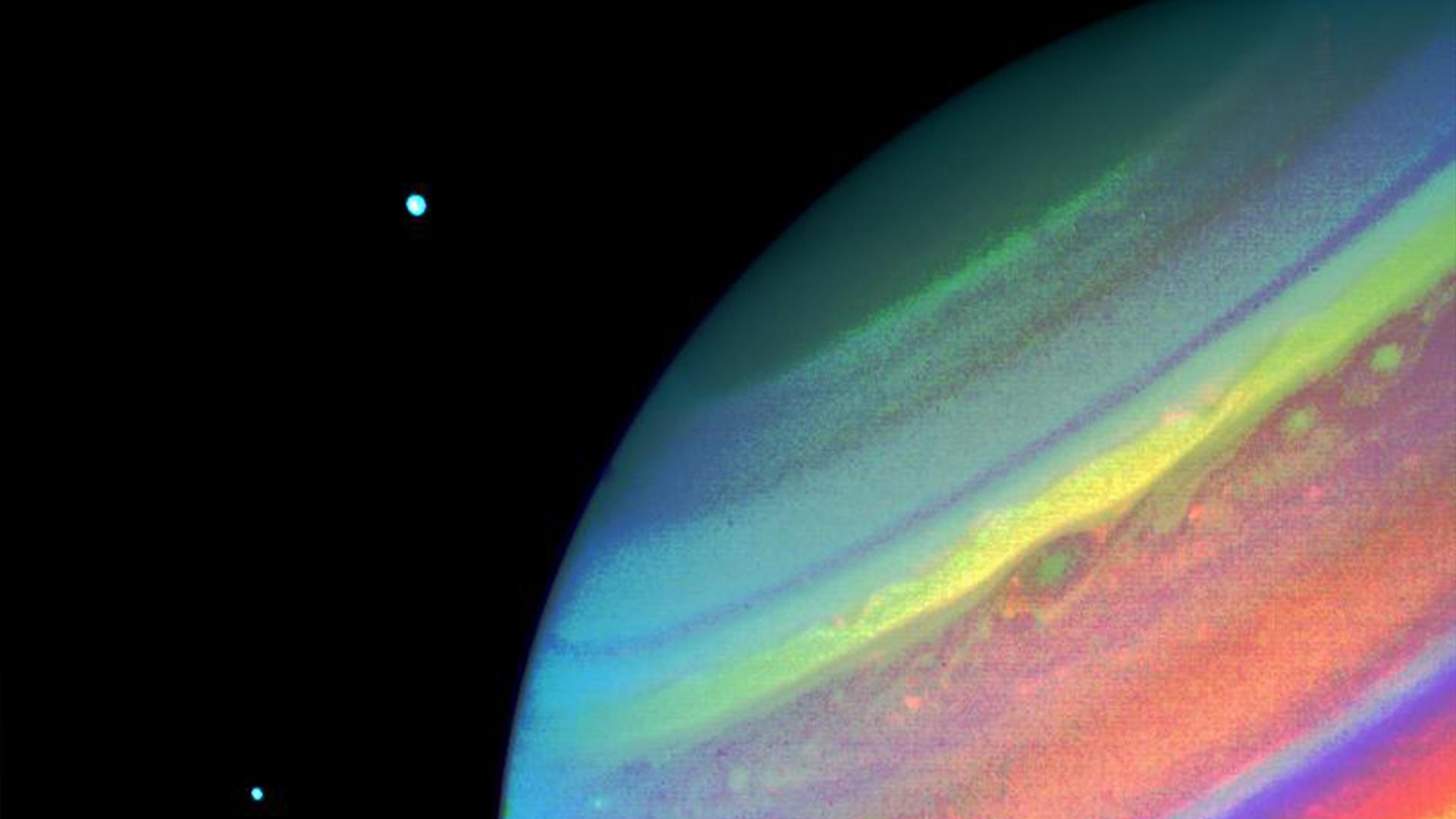Historic space photo of the week: Voyager 2 spies a storm on Saturn 42 years ago
With the ringed planet currently perfectly positioned for observation with a small telescope, relive Voyager 2's landmark 1981 visit.

What it is: Saturn, the seventh planet from the sun, as seen by NASA's Voyager 2 spacecraft
When it was taken: Aug. 11, 1981
Where it is: 886 million miles (1.4 billion kilometers) from the sun — 9.5 times the Earth-sun distance
Why it's so special: Taken 42 years ago this month, this false-color image from NASA's Voyager 2 probe shows the convective clouds and storms in Saturn's northern hemisphere. Visible on the right side of the image are the moons Dione and Enceladus, the latter of which recent observations from the James Webb Space Telescope show is spraying huge plumes of watery vapor far into space.
The image was taken 9 million miles (15 million km) from Earth, just as Voyager 2 approached the ringed planet, using the spacecraft's VG ISS Narrow Angle instrument. The false-color image was assembled from ultraviolet, violet and green images with filters used to make them visible to the human eye. If you look beneath the yellow band of clouds (which, in reality, would be white), you'll see a green spot (which is actually brown) that represents a storm. Voyager 2 measured winds blowing at Saturn's equator at a whopping 1,100 mph (1,770 km/h).
Voyager 2 wasn't the first probe to image Saturn. That distinction goes to Pioneer 11, one of NASA's first solar system probes, which launched in 1973 on a mission to study Jupiter, Saturn and the asteroid belt as a pathfinder for the Voyager missions.
Nor was Voyager 2 the first of the two Voyager probes to photograph the ringed planet. Its twin, Voyager 1, reached Saturn in November 1980, while Voyager 2 visited nine months later, making its closest approach on Aug. 26, 1981. However, because Voyager 2 had more sensitive cameras, it was able to detect a lot more features in Saturn's turbulent atmosphere, according to NASA.
Sign up for the Live Science daily newsletter now
Get the world’s most fascinating discoveries delivered straight to your inbox.
How to see it in the night sky: Now is the perfect time to see Saturn, but to get any sense of its rings, you'll need a good telescope. The ringed planet is currently at its biggest, brightest and best for the year, having reached opposition (when Earth is between it and the sun) on Aug. 27. Saturn is currently in the constellation Aquarius and rising in the east at dusk.

Jamie Carter is a freelance journalist and regular Live Science contributor based in Cardiff, U.K. He is the author of A Stargazing Program For Beginners and lectures on astronomy and the natural world. Jamie regularly writes for Space.com, TechRadar.com, Forbes Science, BBC Wildlife magazine and Scientific American, and many others. He edits WhenIsTheNextEclipse.com.









